
This past autumn foliage season in Japan, we took our elderly parents on a trip to the Kansai region to admire the changing leaves. Usually, when we travel to Japan, we stay in one city for several days, exploring attractions at a leisurely pace on foot before moving to the next city. Since we didn’t use public transport frequently each day, we mostly bought tickets ad-hoc from self-service machines.
However, this trip with our parents involved visiting multiple sights and avoiding the hassle of frequently changing hotels and moving luggage. We opted to stay 3 nights in Kyoto and 4 nights in Osaka, utilizing Japan’s efficient and convenient rail network to travel between Osaka, Kyoto, Uji, and Nara over 7 days.
While this itinerary fully leveraged Japan’s excellent rail system, it also significantly increased our daily transportation expenses. To achieve some savings, we researched various Japanese rail and city transport discount passes before our trip and used a combination tailored to our schedule. Looking back, we made a few mistakes, but overall, we managed to save on travel costs most of the time.
The choice of transportation pass is closely tied to the travel itinerary, so let me first outline our eight-day schedule.
Day 1: Osaka Kansai Airport (KIX) to Kyoto City
On the first day, we departed from Shanghai Pudong International Airport at noon, originally scheduled to arrive at Osaka Kansai International Airport in the afternoon.
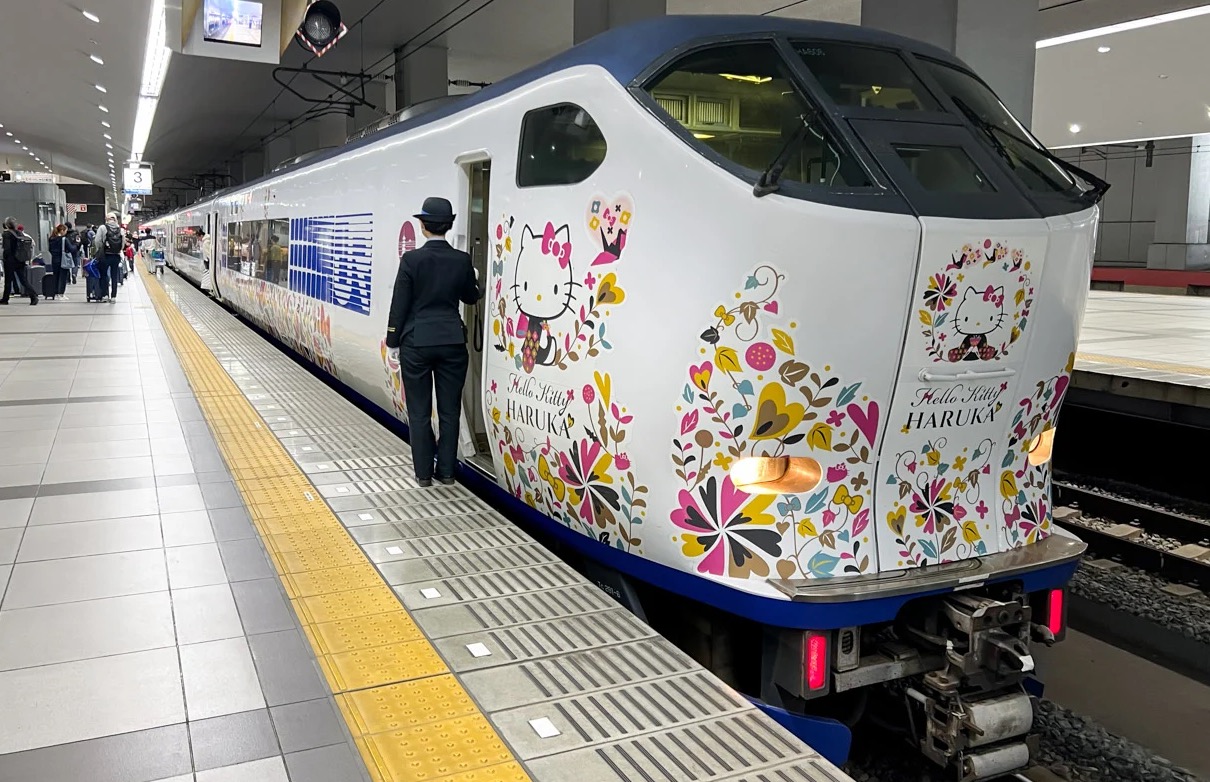
Kansai-Airport Express HARUKA
Our original plan was to take the “Kansai-Airport Express HARUKA” directly to Kyoto upon arrival at KIX, staying overnight in Kyoto. After checking into the hotel, we planned a brief evening stroll within Kyoto city.
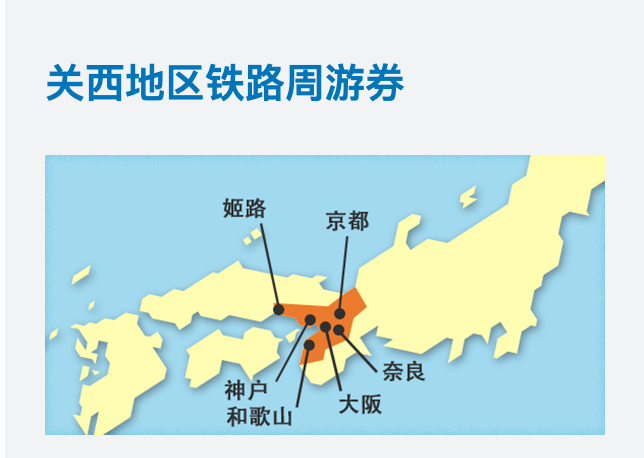
Kansai Area Pass

Tickets included in the Rail Pass
Therefore, we purchased the 1-day “Kansai Area Pass” for that day, costing 2800 JPY per person. After exchanging the voucher at the JR Ticket Office at Kansai Airport, we could take a reserved seat on the “Kansai-Airport Express HARUKA” directly from KIX to JR Kyoto Station.
The “Kansai Area Pass” also provided 3 vouchers for 1-day tickets on the “Kyoto City Subway,” “Keihan Electric Railway,” and “Hankyu Railway.” Our plan was to exit JR Kyoto Station, grab a bowl of ramen at the Ramen Street on the 10th floor, redeem the three vouchers for 1-day tickets, continue our journey to JR Nijo Station, and then check into our hotel.
However, reality often differs from plans. Our flight was delayed by over three hours. By the time we reached Kyoto and checked into our hotel, it was already past 9 PM. We couldn’t use the three local railway vouchers included in the “Kansai Area Pass.”
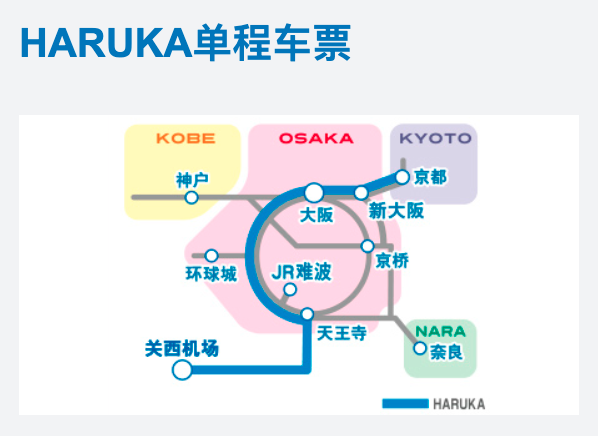
HARUKA One-Way Ticket
In hindsight, if you’re only traveling one way from Kansai Airport to Kyoto and don’t have inter-city travel plans for the following days, purchasing the “HARUKA One-Way Ticket” would have been a better choice; it costs foreign tourists only 2200 JPY.
Day 2: Kyoto Outskirts - Sanzen-in Temple & Kifune Shrine
On the second day, we chose to visit Sanzen-in Temple and Kifune Shrine on the outskirts of Kyoto, which required taking the Kyoto subway, private railways, and buses.
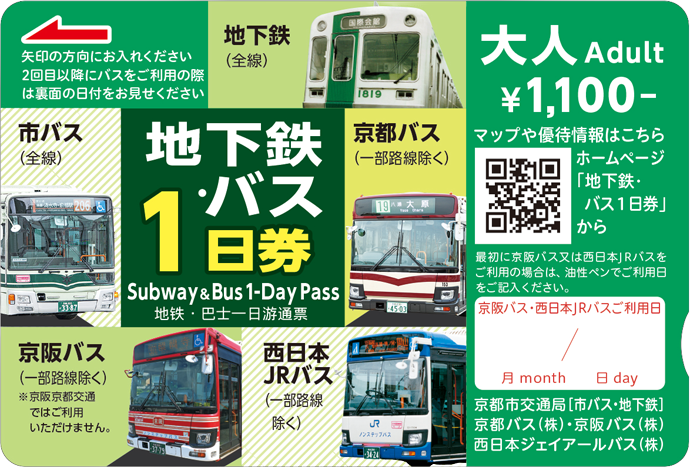
Kyoto Subway & Bus One-Day Pass
When exploring within Kyoto City, the “Kyoto Subway & Bus One-Day Pass” is a good option, costing 1100 JPY per adult (details on purchasing will be in the next article). When buying the pass, you can ask the staff for a guide map; pay attention to the designated usage area marked on the map. Within this area, you can take unlimited rides for the day. Journeys outside the area may require paying a fare difference.
Using the one-day pass, we took the subway from Nijo Castle to Kokusai Kaikan Station, then Bus No. 19 to Sanzen-in. After visiting Sanzen-in, we took Bus No. 19 back to Kokusai Kaikan Station and transferred to Bus No. 52 towards Kifune-guchi. The Kifune-guchi stop for Bus No. 52 was outside the pass’s coverage area, requiring an additional payment of 170 JPY per person.
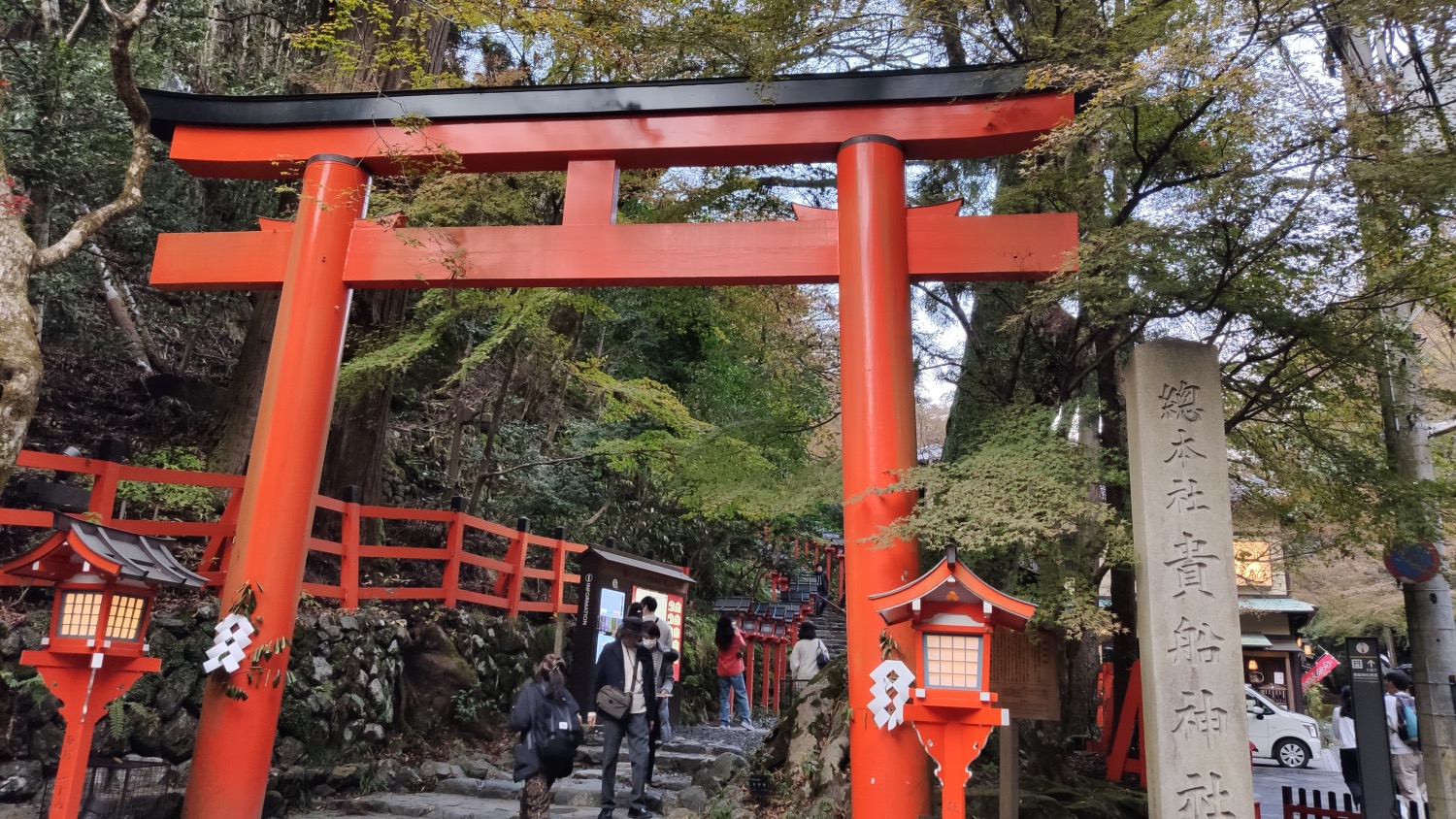
Kifune Shrine
After getting off at Kifune-guchi, walk towards the Eizan Electric Railway station. You’ll see a shuttle bus stop by the roadside; the fare is 130 JPY per person, payable in cash. The shuttle covers only about 1 kilometer, and you still need to walk uphill for the remaining distance.
On our way back from Kifune Shrine, we encountered a few Japanese tourists walking down. After a brief chat, we decided to skip the shuttle and walk back to the Eizan Electric Railway station along the roadside with them. If it’s not raining, the walk is quite manageable, and there are streetlights and car headlights illuminating the path.
Returning to Kyoto city center, we opted for the Eizan Electric Railway, paying 470 JPY per person to Demachiyanagi Station. Along the way, the train passes through a “Maple Tunnel” formed by maple trees on both sides. At night, the train’s interior lights are turned off as it passes through. For the best view, choose a seat at the front or rear of the train.
Day 3: Kyoto Suburbs - Arashiyama
On the third day, we headed to Arashiyama in the Kyoto suburbs and planned to ride the Sagano Romantic Train to enjoy the scenery.

Sagano Romantic Train
The Sagano Romantic Train offers reserved seats and standing tickets. Reserved seats must be booked in advance for a specific date and time, while standing tickets are sold on-site based on availability that day. We pre-booked reserved seats for the “Sagano Romantic Train” via the JR website before leaving our country. However, these pre-booked tickets can only be exchanged at a few specific JR stations, not at the Sagano train stations themselves.
Since the day’s itinerary was solely focused on Arashiyama, we used our Suica cards for transportation instead of buying another “Kyoto Subway & Bus One-Day Pass.”
The fare from JR Nijo Station to JR Umahori Station was 240 JPY per person. After taking the Sagano Romantic Train back to the Arashiyama scenic area and exploring, we returned by bus from the Togetsukyo Bridge area, costing 230 JPY per person.
Although the original plan only included the round-trip fares to Arashiyama, we spontaneously decided to go see illuminated autumn leaves at night, incurring an additional round-trip cost of 490 JPY per person.
Day 4: Kyoto City (Nijo Castle, Kiyomizu-dera) & Travel to Osaka (JR Shin-Imamiya)
The fourth day’s plan involved sightseeing within Kyoto city, followed by taking a JR train from Kyoto to Osaka in the evening, staying overnight in Osaka.
Since our accommodation in Kyoto was close to Nijo Castle, we walked there. After visiting Nijo Castle, we took a city bus to Kiyomizu-dera Temple. From Kiyomizu-dera, we took another bus back to the hotel to retrieve our luggage. The one-way bus fare was 230 JPY per person, totaling 460 JPY for the round trip.
Before leaving for Osaka, to make up for missing out on ramen at JR Kyoto Station’s Ramen Street upon arrival, we took a bus from our hotel to JR Kyoto Station (190 JPY per person).
After finishing our ramen, we took a JR train from Kyoto Station to Shin-Imamiya Station in Osaka, costing 950 JPY per person.
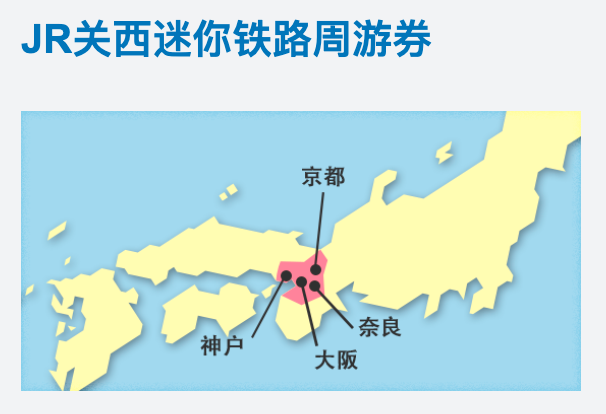
JR Kansai Mini Pass
We had originally planned to buy the “JR Kansai Mini Pass,” valid for 3 days, at 3000 JPY per person. The intention was to use it for the Kyoto-Osaka journey that day, and for the Osaka-Uji and Osaka-Nara round trips on the following two days. However, because the previous two days involved a lot of walking, our elderly parents felt quite tired, so we decided to have a relaxing day in Osaka on Day 5.
Consequently, when redeeming the “JR Kansai Mini Pass” voucher at JR Kyoto Station, we postponed the start date by one day, beginning from Day 6. The “JR Kansai Mini Pass” cannot be purchased directly from the JR website; it needs to be bought through an overseas travel agency. You don’t need to specify the usage dates at the time of purchase, nor link it to a passport. Only upon arrival in Japan, when exchanging the voucher at a JR Ticket Office or using a designated green ticket machine, do you need to link each pass to a passport and specify the start date.
Day 5: Osaka City - Tsutenkaku Tower
The fifth day’s itinerary involved only visiting the Tsutenkaku Tower area near our hotel, which we reached on foot.
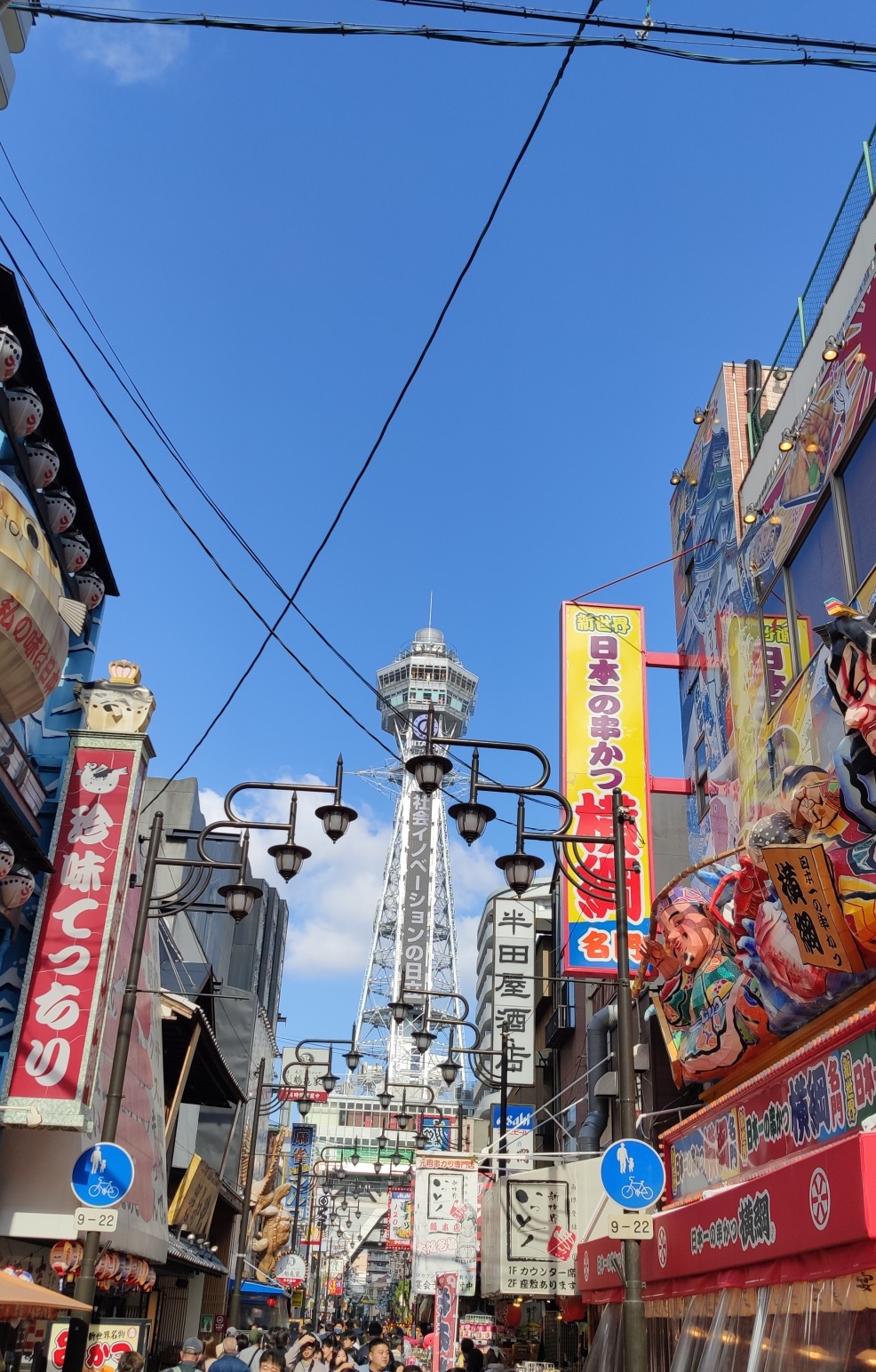
Osaka Tsutenkaku Tower
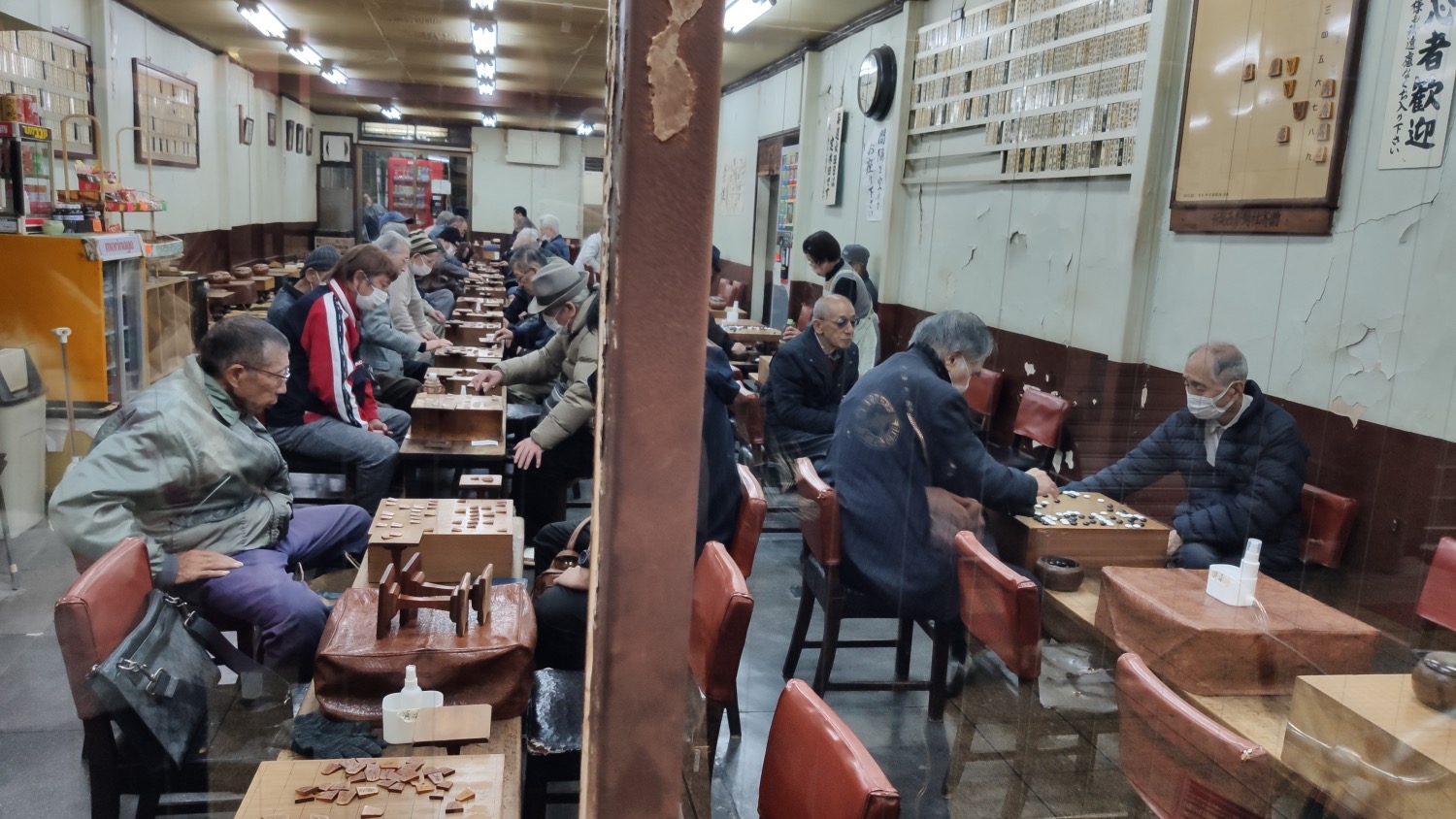
Shogi Parlor in the Bustling City
Our dinner reservation was for all-you-can-eat Wagyu BBQ (booking method to be detailed in a future post) near Tennoji Station. We walked there and back. There were no transportation costs for the day.
Day 6: Day Trip from Osaka to Uji
The sixth day’s plan was to take a JR train from Osaka to Uji, starting our use of the “JR Kansai Mini Pass.” This pass allows travel on JR Local, Rapid, and Special Rapid trains. Taking a Limited Express train requires paying a surcharge.
According to Google Maps, the one-way fare from JR Shin-Imamiya to JR Uji Station is 1170 JPY, making a round trip 2340 JPY.
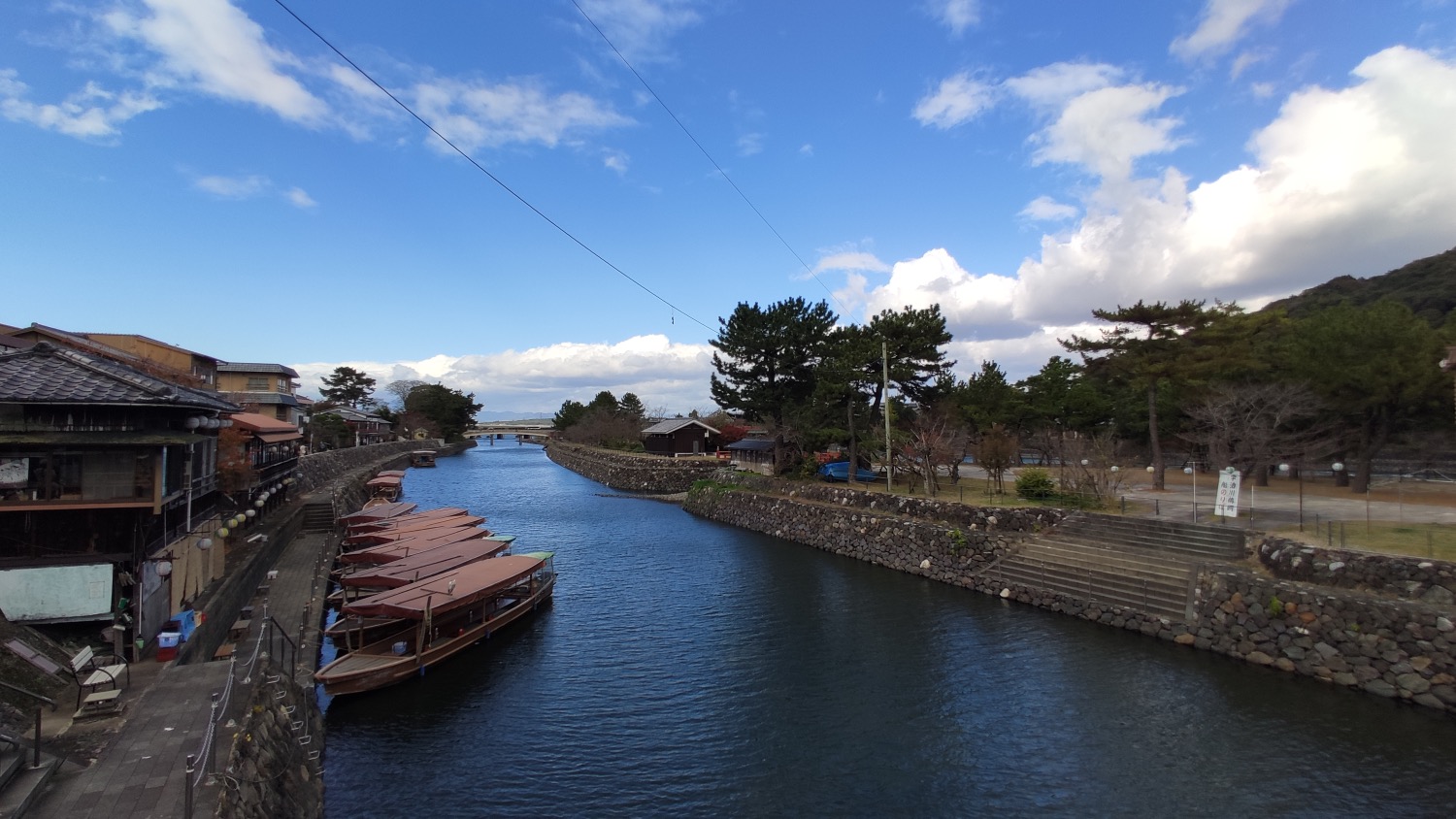
Uji River
In Uji, the main sightseeing area is concentrated around Byodoin Temple and the Uji River. After visiting the main attractions and having some conveyor belt sushi near the bridge, we took the JR train back to Osaka. Thus, we incurred no additional transportation costs within Uji.
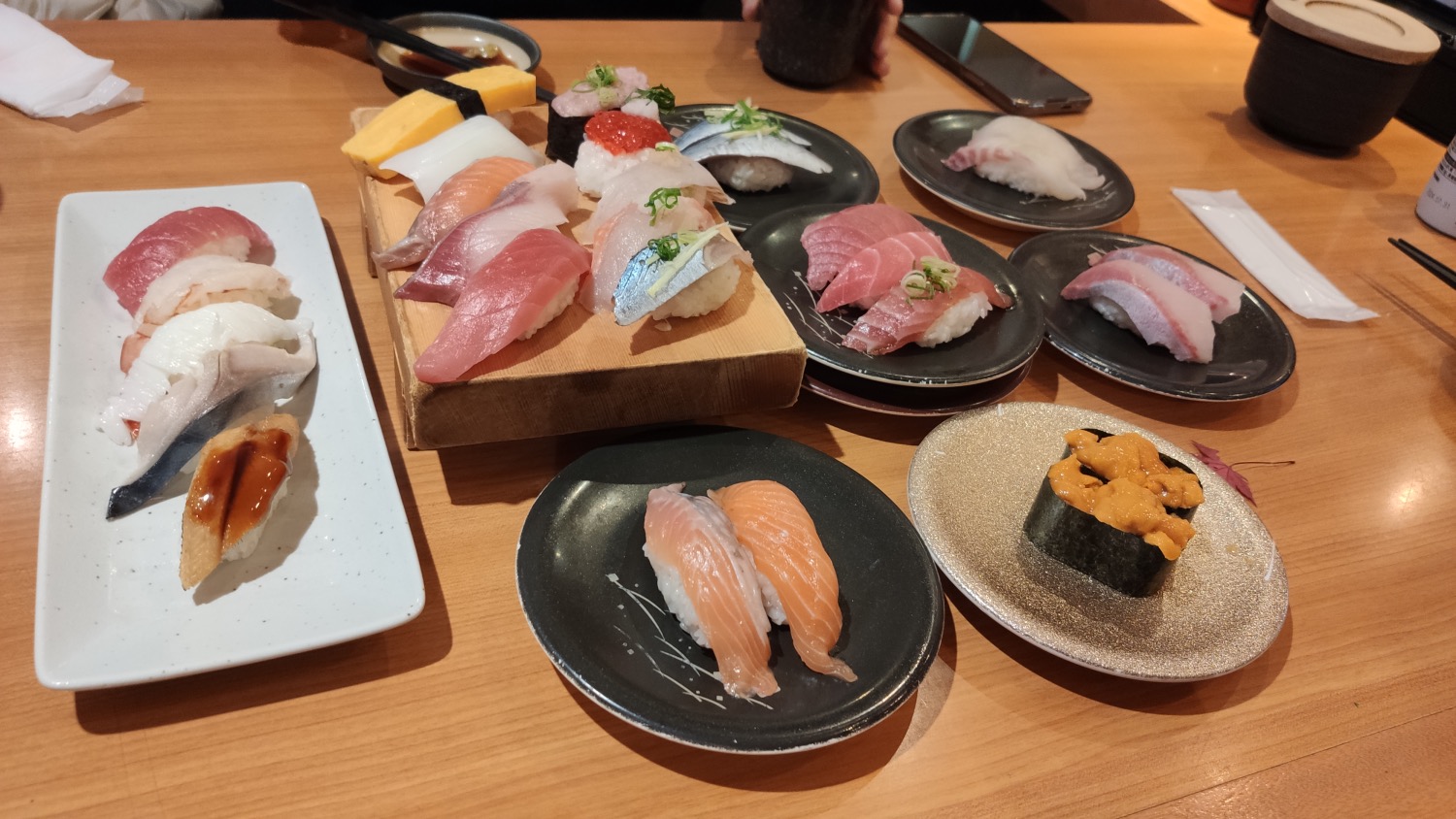
Affordably Priced Sushi
Uji is famous for its matcha. After leaving Byodoin Temple, walking along the Uji River bank, we saw an award-winning matcha ice cream shop by a bridge. Although the temperature wasn’t high that day, many people were queuing up. We bought one; it cost 50 JPY more than elsewhere, but the flavor was significantly richer.
Day 7: Day Trip from Osaka to Nara
The seventh day involved taking a JR train from Osaka to Nara, continuing to use the “JR Kansai Mini Pass.”
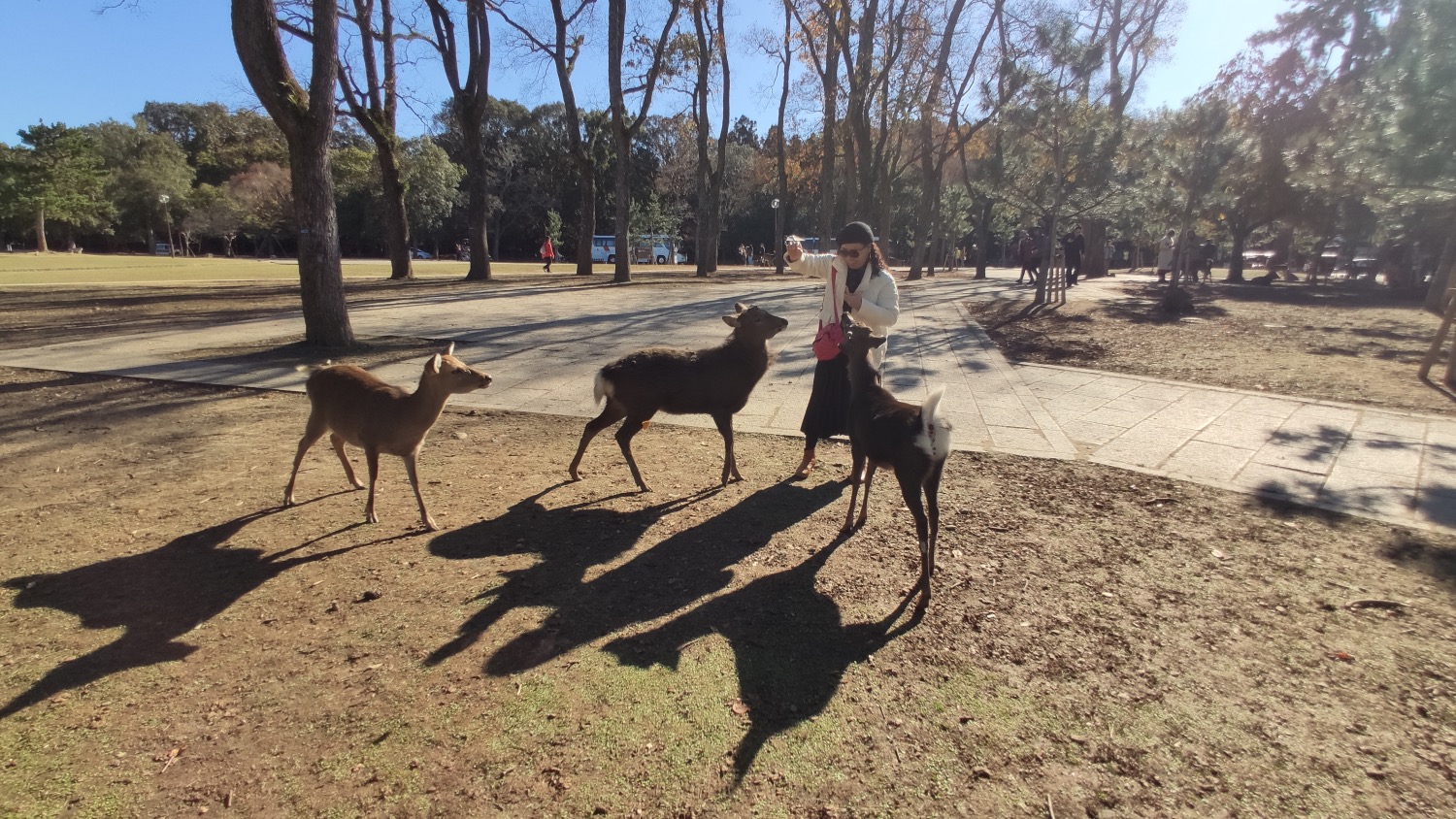
Feeding Deer in Nara Park
According to Google Maps, JR Nara Station is some distance from Nara Park. Those who prefer not to walk can take a bus. Upon exiting JR Nara Station, we picked up a Nara tourist map and followed the marked path to walk to Nara Park.
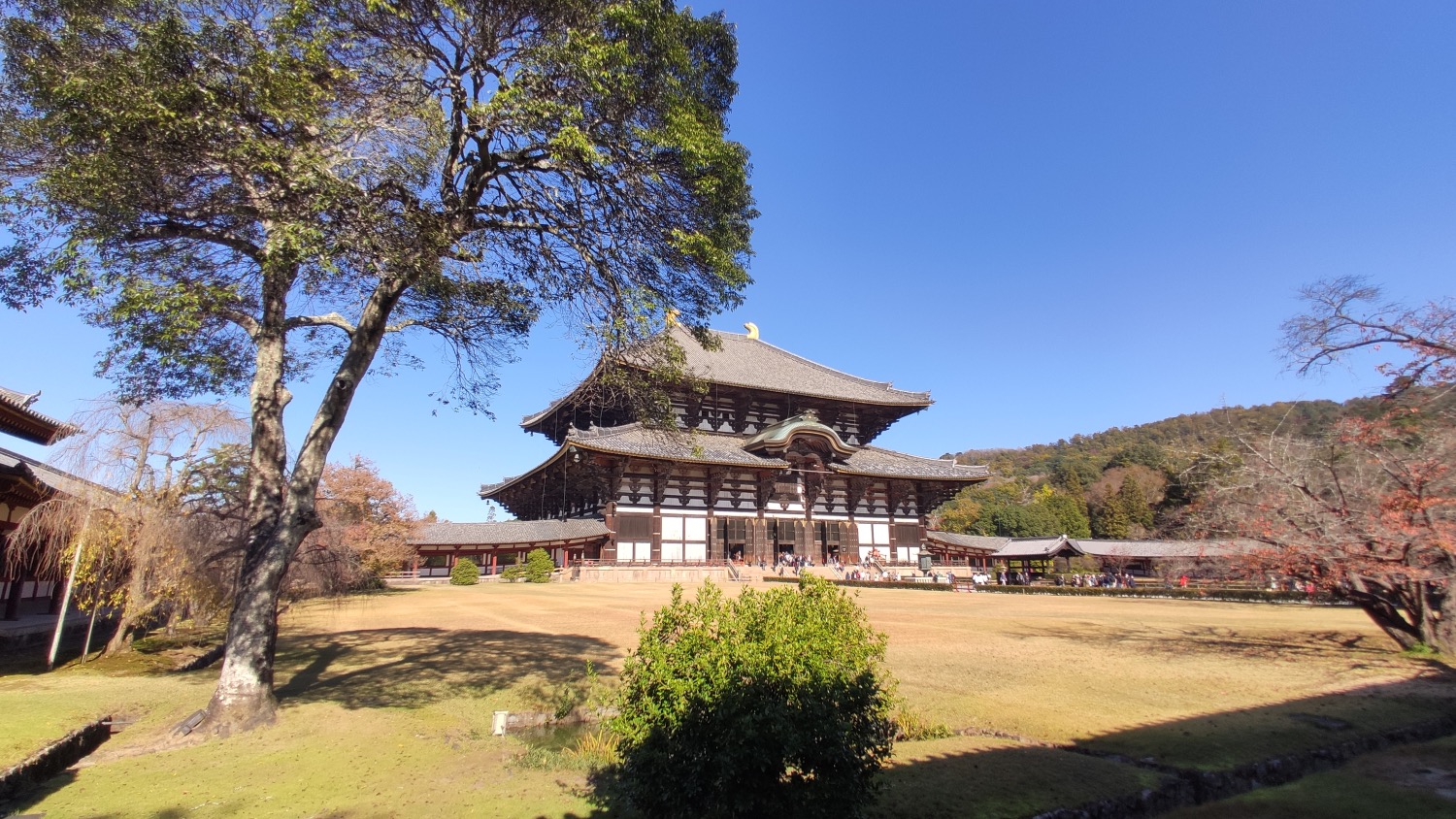
Todai-ji Temple
Nara National Museum is also within Nara Park, but unfortunately, it was closed on the day we visited. Nara Park, Todai-ji Temple, and Kasuga Taisha Shrine are all located close together, making it easy to explore the entire area on foot.
Besides these popular attractions, “Toshodai-ji Temple” was a place we really wanted to see. You can take a direct bus from Nara Park to “Toshodai-ji,” costing 270 JPY per person one way.
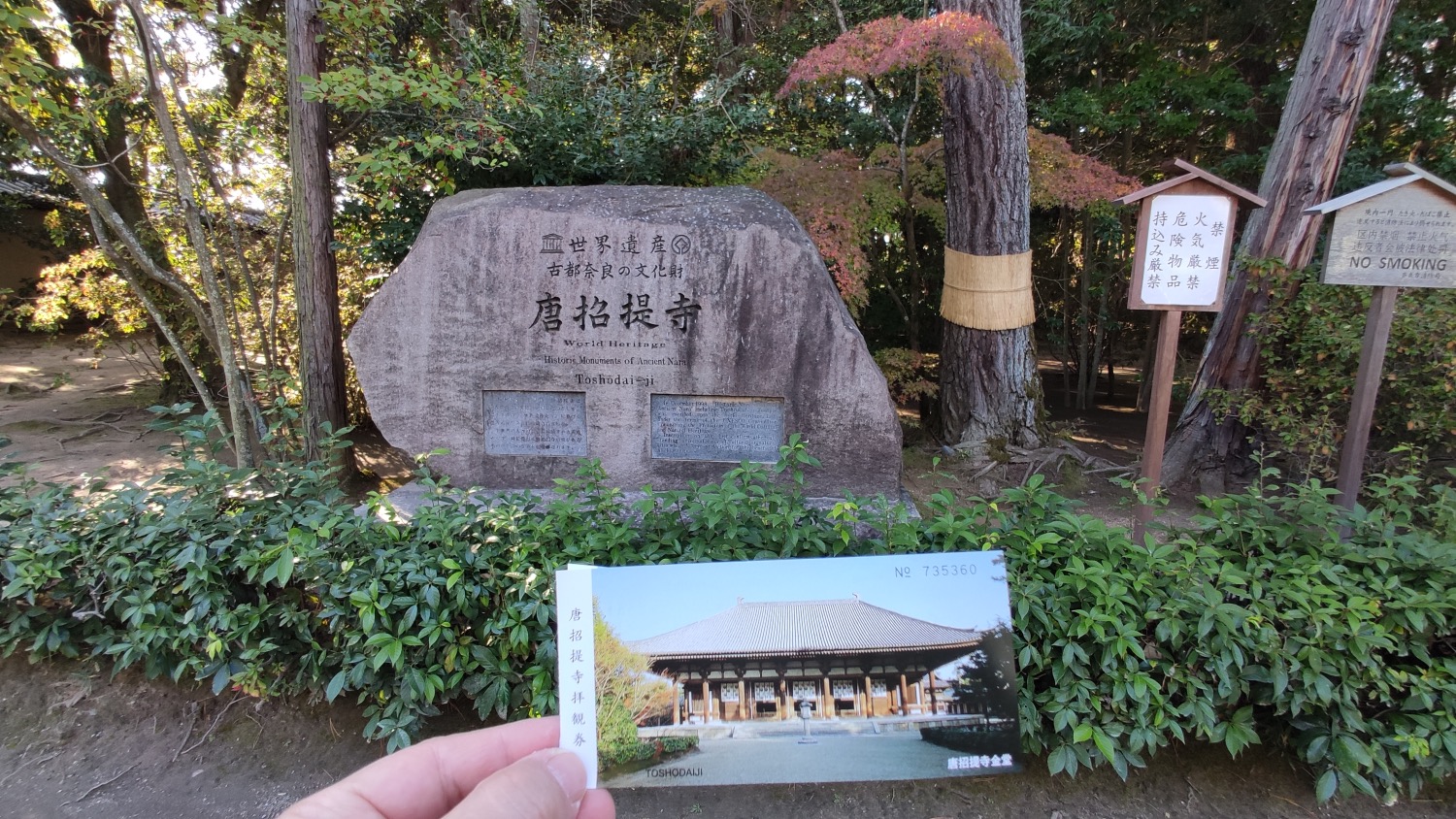
Toshodai-ji Temple
“Toshodai-ji Temple,” the head temple of the Risshū school of Buddhism in Japan, was founded by the Tang Dynasty Chinese monk Jianzhen (Ganjin) and showcases Tang architectural style. After purchasing tickets and entering, most visitors inside were either Japanese or Chinese. The bus ride from Nara Park to Toshodai-ji takes quite a while. If time permits, you could also visit the nearby “Yakushi-ji Temple.”
After visiting “Toshodai-ji,” we took the bus back to JR Nara Station, again costing 270 JPY per person one way.
Overall, Nara’s bus fares seemed higher than Kyoto’s. If your itinerary involves multiple bus trips within Nara on the same day, consider purchasing a “Nara Bus One-Day Pass.”
Day 8: Osaka City to Kansai International Airport (KIX)
On the eighth day, with no other plans, we traveled from JR Shin-Imamiya Station in Osaka to Kansai Airport for our flight home, using the last day of our “JR Kansai Mini Pass.” According to Google Maps, taking the JR Rapid train costs 1080 JPY per person one way.
One thing to note when taking the JR Kansai Airport Rapid Service is that the 8-car train splits: the front 4 cars go to Kansai Airport, and the rear 4 cars go to Wakayama. Because there’s an engine unit connecting them, you cannot move between the front and rear sections while the train is moving.
The train splits at “Hineno” station, heading in different directions. It stops there for a relatively long time, allowing passengers to switch cars based on their destination. I personally recommend boarding the Wakayama-bound cars in Osaka city, as they are usually less crowded, making it easier to find a seat. The stop at Hineno is long enough to comfortably move to the front 4 cars for Kansai Airport via the platform.
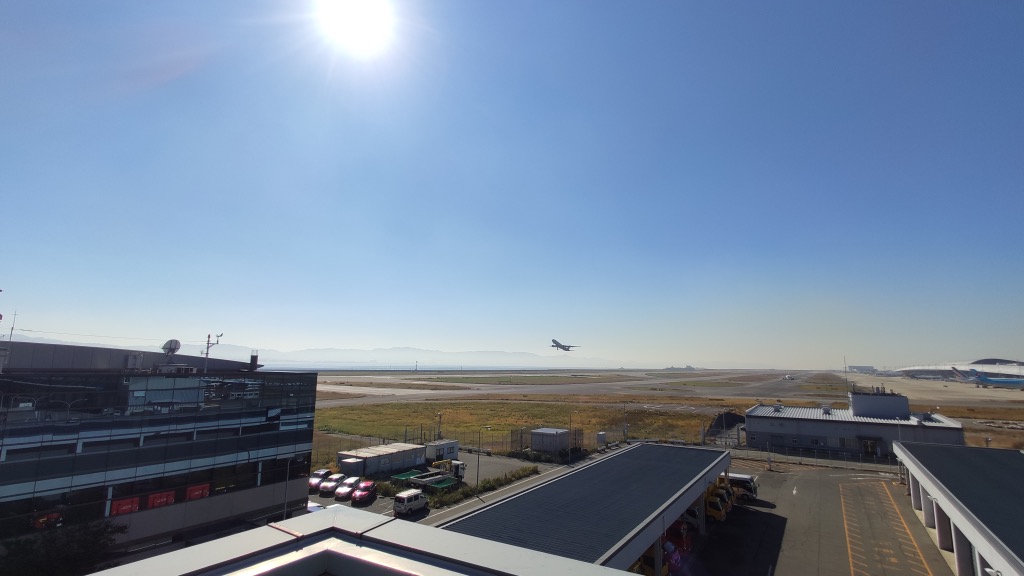
Kansai International Airport - Observation Hall
At Kansai International Airport, if you have ample time, I recommend visiting the Airport Observation Hall. The shuttle bus to the Observation Hall departs from under Terminal 1, with a specific timetable. The Observation Hall consists of two buildings connected by a walkway. The rooftop of the first building (where the bus drops you off) offers close-up views of the apron. The rooftop of the other building provides even closer views of planes taking off, and the 3rd floor of this building houses a small museum detailing the construction of Kansai Airport.
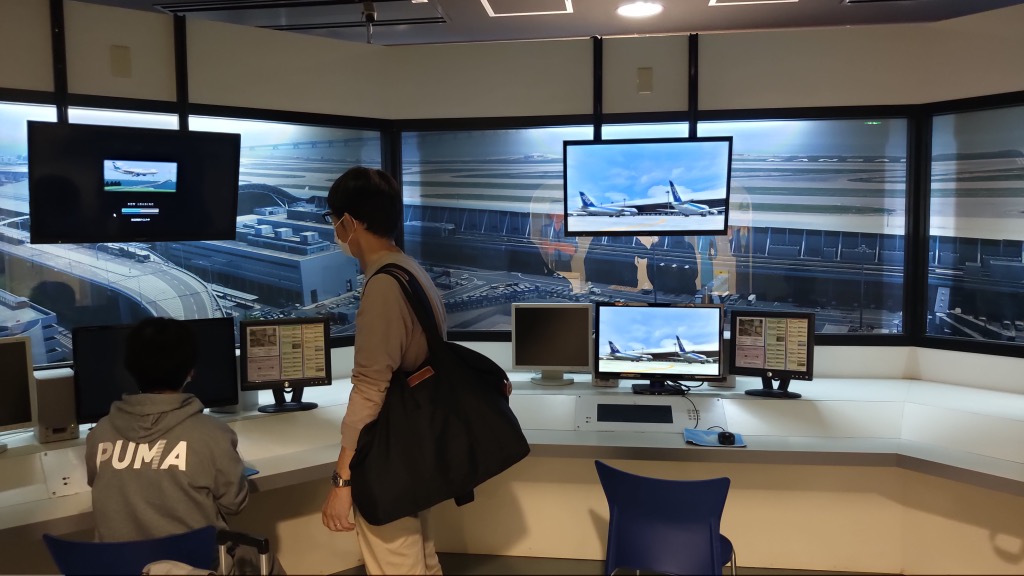
Kansai International Airport - Simulated Control Tower
The museum also features interactive exhibits, such as a simulated airport control tower and flight simulator cockpits. Since it wasn’t crowded, we only had a short wait for a chance to try them out.
We flew with Spring Airlines, which uses Terminal 2. For those looking to buy duty-free goods, the selection in T2 is very small and might be disappointing. However, precisely because only a few low-cost carriers use T2, the check-in, security, and immigration processes are extremely fast. After check-in, there was no queue for security, and we used the automated gates for immigration, completing the entire process in just 10 minutes.
This post primarily described our eight-day itinerary during the autumn foliage season in Japan and the transportation passes we used each day.
| Regular Fare (JPY) | Actual Cost (JPY) | Savings (JPY) | |
|---|---|---|---|
| Day 1 | HARUKA One-Way Ticket: 2200 | Kansai Area Pass (1-Day): 2800 | -600 |
| Day 2 | Subway: 290 Bus 19 R/T: 720 Bus 52: 280 Shuttle: 130 Eizan Railway: 470 | Kyoto Subway & Bus Pass: 1100 Out-of-area Surcharge: 170 Shuttle: 130 Eizan Railway: 470 | 440 |
| Day 3 | JR: 240 Sagano Train: 880 Bus: 230 Subway+Bus R/T (night): 490 | JR: 240 Sagano Train: 880 Bus: 230 Subway+Bus R/T (night): 490 | 0 |
| Day 4 | Bus R/T: 460 Bus: 190 JR: 950 | Bus R/T: 460 Bus: 190 JR: 950 | 0 |
| Day 5 | None | None | 0 |
| Day 6 | JR R/T: 2340 | JR Kansai Mini Pass: 3000 | -660 (Pass used over 3 days) |
| Day 7 | JR R/T: 1160 Bus R/T: 540 | Bus R/T: 540 | 1160 (Covered by Mini Pass) |
| Day 8 | JR: 1080 | None (Covered by Mini Pass) | 1080 (Covered by Mini Pass) |
Over 8 days in Japan’s Kansai region, the actual transportation cost per person was 11,620 JPY. For three people, the total actual cost was 34,860 JPY, which was approximately 1743 RMB based on the exchange rate at the time.
By using discount passes, we saved 1,420 JPY per person. For three people, the total savings amounted to 4,260 JPY, approximately 213 RMB based on the exchange rate at the time. (Note: Calculations adjusted based on pass usage logic - Mini Pass cost is spread, savings calculated daily based on pass coverage)
In the next post, I will introduce the methods for booking these transportation passes and points to note.